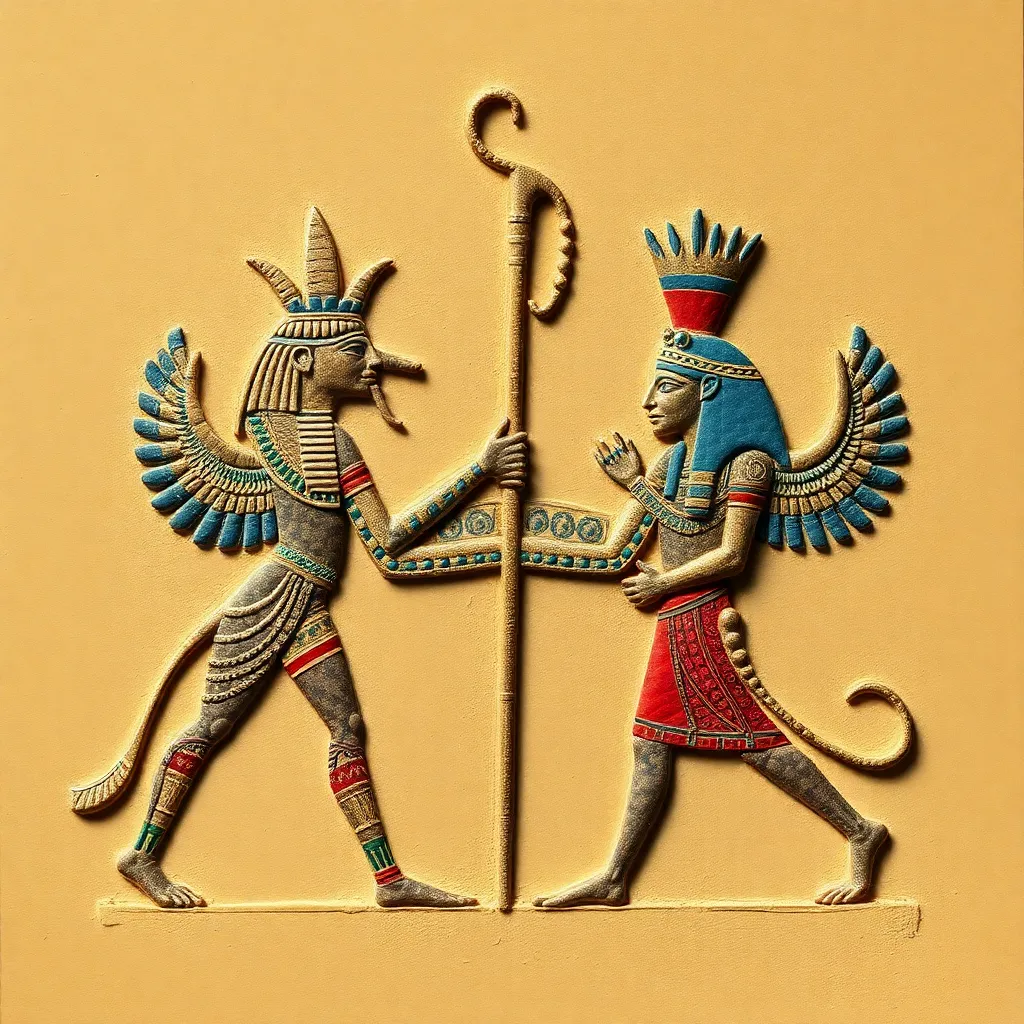Atenism and Its Impact on Egyptian Art and Culture
I. Introduction
Atenism, a religious movement that emerged during the reign of Pharaoh Akhenaten in ancient Egypt, is characterized by the worship of Aten, the sun disk. This monotheistic belief system marked a significant departure from the traditional polytheistic practices that had dominated Egyptian religion for centuries.
The historical context of Atenism is rooted in the broader socio-political changes of the Amarna Period, a time of upheaval and reform in ancient Egypt. Understanding Atenism is crucial for appreciating its profound influence on art and culture during this period, as it reshaped not only religious beliefs but also the artistic expression and societal structures of the time.
II. The Rise of Atenism
The rise of Atenism can be traced back to the reign of Akhenaten, who is often credited with initiating this radical shift in religious ideology. Before Akhenaten, the Egyptian pantheon was filled with numerous gods and goddesses, each representing various aspects of life and nature.
During the Amarna Period, Akhenaten promoted the worship of Aten above all other deities, establishing a form of monotheism that was unprecedented in ancient Egypt. This transition was marked by the construction of a new capital, Akhetaten (modern-day Amarna), which served as the center of worship for the Aten.
III. Changes in Artistic Expression
The artistic expression of ancient Egypt underwent a significant transformation during the reign of Akhenaten, leading to what is known as Amarna art. This new style departed from the rigid and formal conventions of traditional Egyptian art, embracing a more naturalistic and realistic approach.
- Shift from traditional Egyptian art: The depiction of figures became more relaxed, with an emphasis on movement and emotion.
- New themes and subjects: Art began to focus on the royal family, showcasing intimate and familial scenes rather than solely religious iconography.
- Characteristics of Amarna art style: This style is noted for its realism and naturalism, often portraying Akhenaten, his wife Nefertiti, and their children in an affectionate manner.
IV. Architectural Innovations
Atenism also led to significant architectural innovations, particularly in the design of temples and the establishment of new urban centers. The temples dedicated to the Aten were designed to allow sunlight to enter freely, symbolizing the deity’s life-giving power.
The city of Akhetaten, built during Akhenaten’s reign, was a remarkable urban development that reflected the principles of Atenism. The layout of the city and its structures emphasized open spaces and sunlight, integrating the worship of the Aten into everyday life.
The architectural practices established during this period influenced future Egyptian architecture, as elements of the Amarna style persisted even after the decline of Atenism.
V. Cultural Shifts and Societal Changes
The rise of Atenism brought about profound cultural shifts and societal changes in ancient Egypt. Religious practices transformed as the worship of the Aten replaced the traditional polytheistic beliefs that had been entrenched in Egyptian society.
The role of the royal family was pivotal in promoting Atenism. Akhenaten and Nefertiti actively participated in religious rituals and public displays of devotion to the Aten, reinforcing their status as the divine intermediaries between the sun god and the people.
This new religious framework also impacted social hierarchy and power structures, as priests of the Aten gained prominence while the traditional priesthood of the old gods diminished in influence.
VI. Atenism’s Influence on Literature and Philosophy
Atenism extended its influence into literature and philosophy, leading to the creation of literary works that reflected Atenist ideology. Texts from this period often emphasized themes of monotheism, the importance of the sun, and the divine nature of the pharaoh.
The philosophical implications of monotheism in Egyptian thought were significant, as they introduced new concepts of divinity and the nature of existence. Comparatively, Atenism presented a stark contrast to earlier and later Egyptian literary traditions, which were predominantly polytheistic and focused on multiple deities.
VII. The Decline of Atenism and Its Legacy
Despite its initial success, Atenism faced numerous challenges that ultimately led to its decline after Akhenaten’s death. Several factors contributed to this downfall, including a backlash from traditionalists and the reassertion of the old religious practices.
The restoration of traditional polytheistic beliefs was swift, as subsequent rulers, notably Tutankhamun and Horemheb, sought to erase the legacy of Akhenaten and reinstate the worship of the traditional gods.
Nevertheless, the impact of Atenism on Egyptian art and culture endured. Elements of Amarna art continued to influence artistic expression in Egypt, and the philosophical concepts introduced during this period left a lasting mark on the development of religious thought.
VIII. Conclusion
Atenism’s contributions to art and culture during the Amarna Period were significant, representing a unique moment in ancient Egyptian history. The shift towards monotheism, combined with radical changes in artistic expression and architectural design, showcased a transformative era that reflected the ambitions of Akhenaten.
In the broader context of ancient Egyptian history, the significance of Atenism lies in its challenge to established norms and its role in shaping subsequent religious and cultural developments. The legacy of Akhenaten and the Aten continues to be a subject of fascination and study in modern scholarship, highlighting the complexities of ancient Egyptian civilization.




